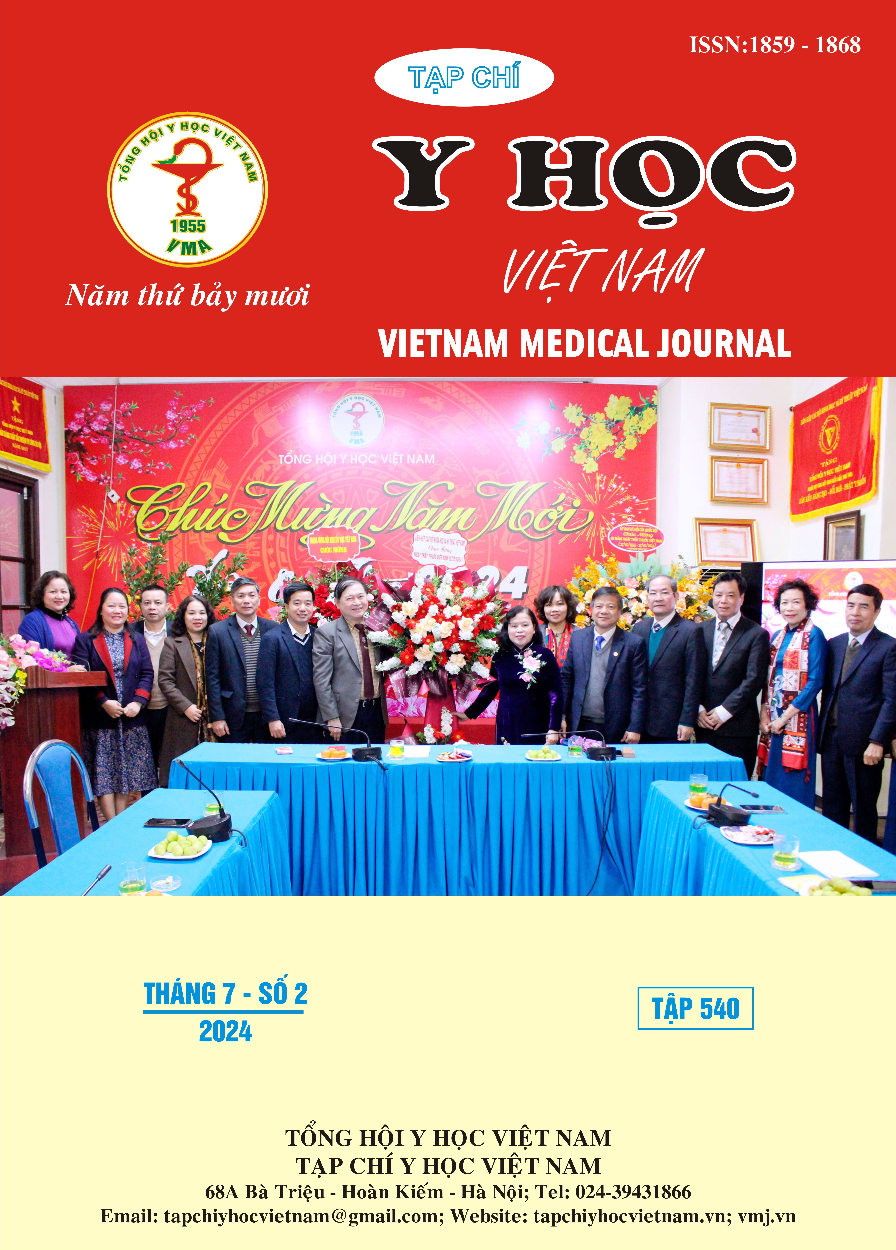CHARACTERISTICS AND BACTERIA ETIOLOGIES OF VENTILATION-ASSOCIATED PNEUMONIA IN THE INTENSIVE CARE DEPARTMENT OF HA TINH PROVINCE GENERAL HOSPITAL
Main Article Content
Abstract
Objective: to assess the characteristics of ventilator-associated pneumonia (VAP) and determine the bacterial causes of VAP. Subjects and methods: Cross-sectional descriptive study included 269 patients with endotracheal tube (or tracheostomy) mechanically ventilated for more than 48 hours from January 1, 2022 to December 31, 2022 at the Intensive Care Department of Ha Tinh Provincial General Hospital. Results: VAP accounted for 35.5% with an incidence of 44.35 patients/1000 days of mechanical ventilation. The average age of patients with VAP was 72 ± 13.6 years old, with late-onset VAP accounting for a high rate (60%). Patients with VAP mostly presented high fever, leukocytosis, and increased procalcitonin. In particular, signs of rapid breathing, rales in the lungs and increased secretion of sputum were presented in 100% of patients. The etiologies of VAP were mainly gram-negative bacteria, with the most common was Acinetobacter baumanni (53.7%), followed by Klebsiella pneumonia (23.2%). The mortality rate from VAP remains high. Conclusion: The study revealed the incidence, characteristics and bacterial causes of ventilator-associated pneumonia in the Intensive Care Department of Ha Tinh Provincial General Hospital
Article Details
Keywords
Ventilator-associated pneumonia, Ha Tinh Provincial General Hospital
References
2. American Thoracic Society, Infectious Diseases Society of America. Guidelines for the management of adults with hospital-acquired, ventilator-associated, and healthcare-associated pneumonia. Am J Respir Crit Care Med. 2005; 171(4):388-416. doi:10.1164/rccm.200405-644ST
3. Bozorgmehr R, Bahrani V, Fatemi A. Ventilator-Associated Pneumonia and Its Responsible Germs; an Epidemiological Study. Emergency. 2017;5(1):e26.
4. Hoàng Khánh Linh. Nghiên Cứu Đặc Điểm Viêm Phổi Liên Quan Thở Máy Tại Khoa Hồi Sức Tích Cực Bệnh Viện Bạch Mai Giai Đoạn 2017 - 2018. Luận văn bác sỹ chuyên khoa cấp II. Đại học Y Hà Nội; 2018.
5. Risk factors for ventilator-associated pneumonia among patients undergoing major oncological surgery for head and neck cancer - PubMed. Accessed March 31, 2024. https://pubmed.ncbi.nlm.nih.gov/ 28493197/
6. Thuỷ TTV, Phước DT. Nghiên cứu tình hình viêm phổi liên quan thở máy tại khoa hồi sức tích cực và chống độc bệnh viện đa khoa trung ương cần thơ năm 2022-2023. Tạp chí dược học cần thơ. 2023;(65):122-128. doi:10.58490/ ctump. 2023i65.1270
7. Tiến HV, Thông TH, Phú VĐ, Hưng HT. Viêm phổi liên quan thở máy tại trung tâm chống độc bệnh viện bạch mai năm 2022 - 2023. Tạp Chí Học Việt Nam. 2024;534(2). doi:10.51298/ vmj.v534i2.8128
8. Trâm QA, Hà NT. Một số đặc điểm vi khuẩn ở người bệnh viêm phổi liên quan thở máy tại khoa chống độc bệnh viện hữu nghị đa khoa nghệ an. Tạp Chí Học Việt Nam. 2023;530(1). doi: 10.51298/vmj.v530i1.6599
9. Đặc điểm nhiễm khuẩn Acinetobacter baumannii ở bệnh nhân viêm phổi thở máy tại khoa hồi sức cấp cứu Bệnh viện Chợ Rẫy. Accessed March 31, 2024. http://ump.kipos.vn/ Opac/DmdInfo.aspx?mnuid=141&search_field=AUTHOR&search_id=126&dmd_id=48181


